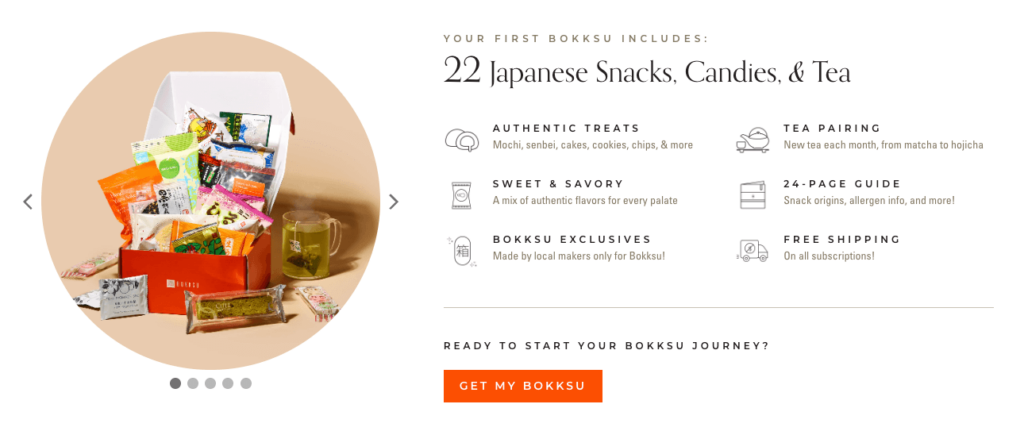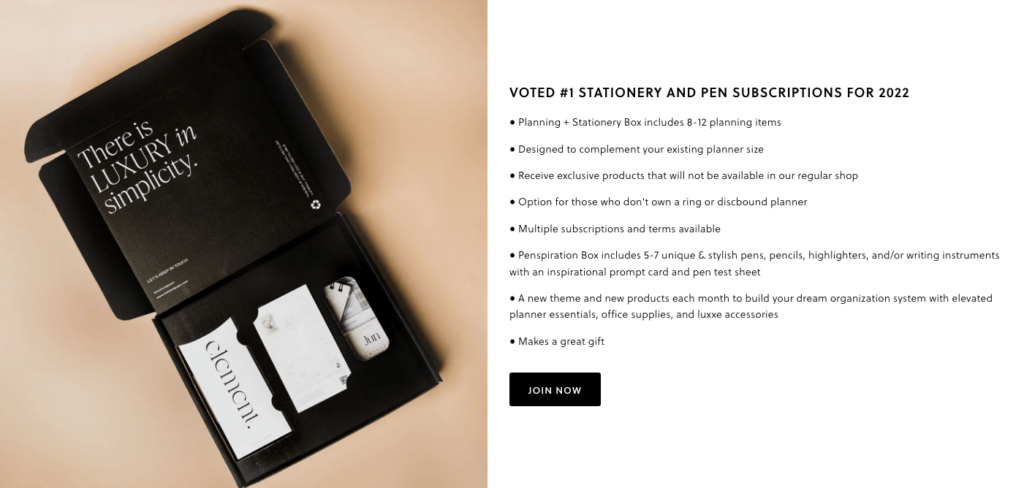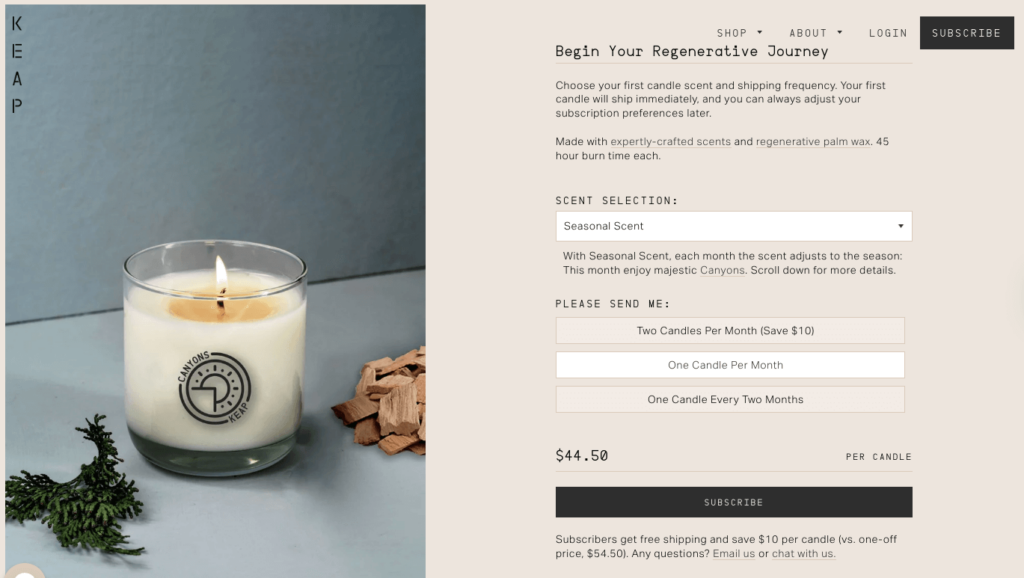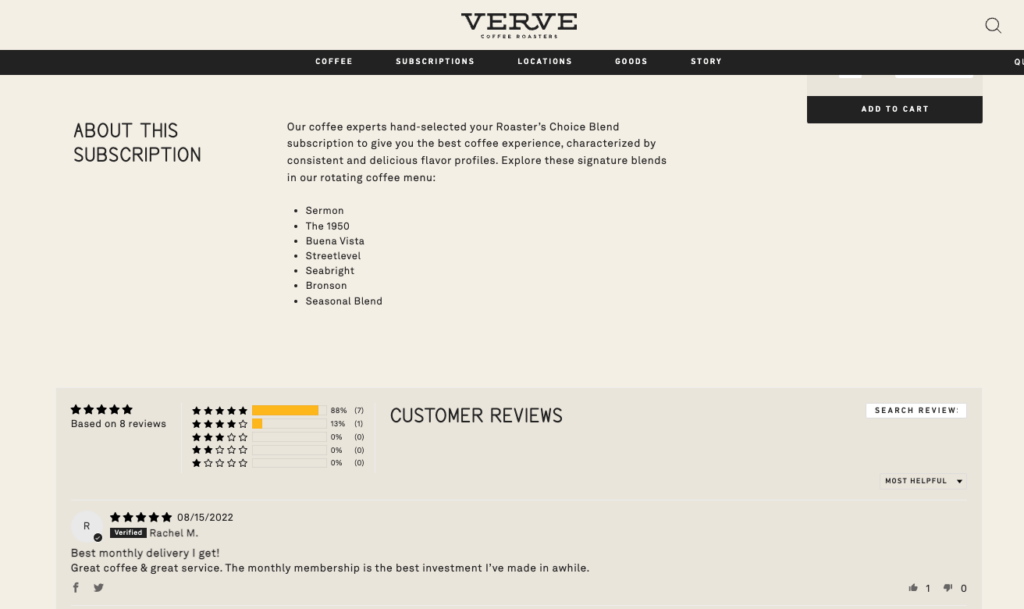If you’ve ever come across an ecommerce site through an online search for a specific product, you’ve most likely seen a generic and unhelpful product description or two in the search results.
Unfortunately, up to 10% of ecommerce sites have insufficient product descriptions for what potential customers are looking for. This can dissuade customers from going through with a purchase and also increase the likelihood of them returning a product because it doesn’t match the product description.
So how do you master product description writing and get readers intrigued by your subscription box? Continue reading to find out…
Key takeaways
- Product descriptions are a key component in the conversion funnel.
- Know your target audience, and craft everything for them.
- Product descriptions should be clear, concise, and helpful.
What is a product description?
Product descriptions do exactly what you think: They describe the product. But more than that, product descriptions play a part in the sales funnel as a touch-point for an online business. Where a brick-and-mortar store has floor salespeople to describe what a product does and is good for, an online store has product descriptions.
The mark of a good website is having relevant and useful content for the consumer to absorb, including product descriptions that outline the why, how, when, and what a product has to offer.
How to write product descriptions
Product descriptions can be especially crucial for both conversion rates and churn prevention for subscription boxes, which are received on a recurring cadence.
This kind of product is unique because agreeing to receive a product and get charged on a recurring basis requires a larger initial buy-in than one-time purchases. It is essentially an agreement between the potential customer and the merchant on a mutually beneficial relationship.

The key elements of writing product descriptions for subscription boxes
It’s important to understand your ideal customer and also provide them with a compelling product description that solves a specific pain point. When you write product descriptions for subscription boxes, you should consider:
- Identifying potential buyers
- What the subscription box contains
- Why customers should subscribe to this box
- When they will receive this subscription box
- How they will use it
1. Identifying the potential buyer
The first step in writing product descriptions that sell is determining the target audience. This is the case for most effective strategies in the ecommerce space, in order to cater to potential customers with the highest chance of success.
By identifying who your ideal cohort is, you can then mold your product description to appeal to them in a way that makes sense. You can ask yourself questions like:
- Where are these online shoppers coming to your site from, and how do they access your storefront? Are they predominantly on mobile?
- What is the general age range? What kind of power words would resonate with them?
- What sort of product details would be most interesting to them?
Writing compelling product descriptions has a lot to do with writing for potential buyers that fit your target demographic for the highest conversion.
Because potential consumers don’t have the ability to touch and feel and experience products in person before they buy online, having effective product descriptions that sell is important in customer acquisition.
2. What the subscription box contains
The most intuitive part about writing a product description is detailing the product features. What exactly is your customer getting when they subscribe? There are three main types of subscriptions:
- Curation
- Replenishment
- Access
Subscription boxes typically fall into the first category, though they can sometimes belong to the replenishment category as well. For subscription boxes, you want to let your target audience know what sort of products they’ll be getting in the product description so they know exactly what they’re signing up for, and you can mitigate potential churn.
Cloth and Paper offers a great product description example where it outlines its key features in bullet points. The product description is easy to read and understand, so customers know they will be getting a set number of pens and tools in their Penspiration box.

3. Why customers should subscribe to this box
Part of an effective product description is clearly laying out the value propositions of subscribing, and why customers should subscribe to your own ecommerce business over another. Outlining the product benefits is not the end-all-be-all, however.
You’ll want to use marketing copy that reflects your customer’s persona while still matching your brand voice. You’ll also want to answer questions that your customer might have, like:
- What problem is your product solving? Include an example or two of how it’s done this through success stories.
- How does your subscription box triumph over its competitors? Is it through product quality? Does your ecommerce store use ethically sourced materials, or contribute to social good through some sort of campaign?
Including all of the relevant information can influence your ideal customers’ purchase decisions.

4. When will they receive this subscription box?
Including when and at what frequency your subscription box will arrive is important to manage expectations and get your customers excited. Shipping and fulfillment times can be a barrier to many readers, so being transparent about technical details like delivery times can also aid in customer satisfaction and retention.
If you offer different options for frequency, you’ll want to make sure that you don’t overwhelm the customer with too many options, and that what you do offer makes sense.
5. How customers can make the most out of your subscription box
Your product description should also include a guideline for using the products when relevant. Especially for more technical products, it’s important to be able to understand the amount of effort or commitment needed to be able to fully leverage your subscription box and encourage potential buyers.
Practical considerations when you write product descriptions
So now that we’ve identified the context behind writing effective product descriptions, let’s get into some very practical tips before you begin writing your own.
Optimize the rest of the page
Strong product titles and product images are important to pair with your product description. Product titles should clearly indicate what the product is and what it is useful for when possible. In addition, high quality product images can catch the readers’ eye and generate brand trust. They can also be used to break up a page that may have lots of information on it, to engage the reader and encourage them to stay on the page.
Craft a product description template
After making the considerations for your product descriptions as a whole, you can craft a general product description template for your products to follow.
- A short paragraph outlining the product’s story
This is the part of a product description meant to entice the reader initially and answer the question of, “What problem does the product solve?” Use descriptive words that reflect your target audience in a tone as if it were a conversation you were having in a brick-and-mortar store, and focus on reaching the customer.
- Outline key benefits & details in bullet points
This makes the product description scannable and easy to digest for readers who don’t want to dive in deep, and is also a great opportunity to utilize keywords for search engine optimization. While you do want to tell a story with your product descriptions, you also want your product to be higher in organic search rankings so your product is easier to find via organic search.
Having a healthy balance of storytale marketing and search engine optimized content is key to generating more traffic.

- Add a great example (or two) of results from customers
Generating social proof is important to create trust in your online store whenever it’s relevant. If your subscription box doesn’t warrant a “success story,” then include reviews from customers who have happily received their product.

Measuring success & split testing on product pages
We’re big fans of data-driven strategy in ecommerce over here, and it can actually be extremely useful when it comes to product descriptions. Many merchants test out various versions of product description copy on different landing pages or with new versions and utilize the split tested version in future iterations and offerings.
Tell a story & describe the next chapter
A product description that results in more sales is selling more than just a product, it is selling an experience. By carefully crafting what a customer can expect and showcasing an example of how others have loved it, you’re providing customers a sneak peek into the next chapter of their own story.
And with subscription boxes, you can keep that story going.
Sources
[1] 10% of E-Commerce Sites Have Product Descriptions That Are Insufficient for Users’ Needs (Articles)
[2] How to develop ideas for your subscription business (Blog)
[3] Customer churn (Ecommerce glossary)
[4] How to overcome choice paralysis in your business (Blog)



